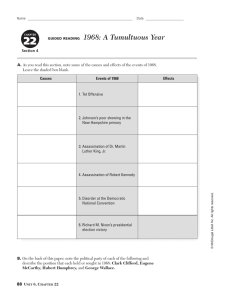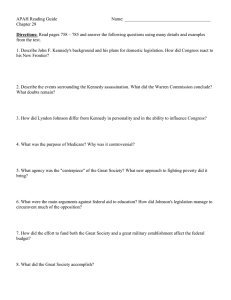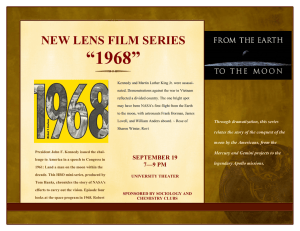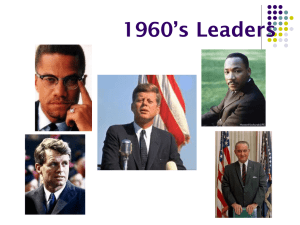Shaken to the Roots, 1965 - 1980
advertisement
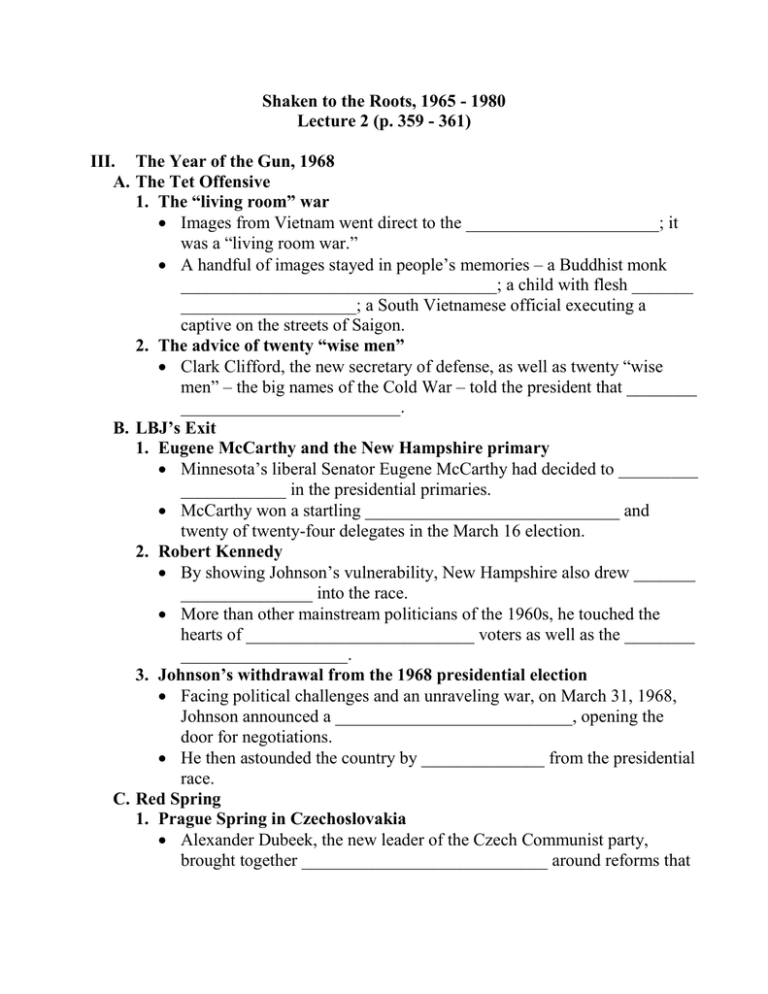
Shaken to the Roots, 1965 - 1980 Lecture 2 (p. 359 - 361) III. The Year of the Gun, 1968 A. The Tet Offensive 1. The “living room” war Images from Vietnam went direct to the ______________________; it was a “living room war.” A handful of images stayed in people’s memories – a Buddhist monk ____________________________________; a child with flesh _______ ____________________; a South Vietnamese official executing a captive on the streets of Saigon. 2. The advice of twenty “wise men” Clark Clifford, the new secretary of defense, as well as twenty “wise men” – the big names of the Cold War – told the president that ________ _________________________. B. LBJ’s Exit 1. Eugene McCarthy and the New Hampshire primary Minnesota’s liberal Senator Eugene McCarthy had decided to _________ ____________ in the presidential primaries. McCarthy won a startling _____________________________ and twenty of twenty-four delegates in the March 16 election. 2. Robert Kennedy By showing Johnson’s vulnerability, New Hampshire also drew _______ _______________ into the race. More than other mainstream politicians of the 1960s, he touched the hearts of __________________________ voters as well as the ________ ___________________. 3. Johnson’s withdrawal from the 1968 presidential election Facing political challenges and an unraveling war, on March 31, 1968, Johnson announced a ___________________________, opening the door for negotiations. He then astounded the country by ______________ from the presidential race. C. Red Spring 1. Prague Spring in Czechoslovakia Alexander Dubeek, the new leader of the Czech Communist party, brought together ____________________________ around reforms that caused people to talk about “Prague Spring” - a _______________ _____________ inside the iron curtain. In August, the Soviets sent in their __________________________ and bring Czechoslovakia back in line. 2. Red Spring in France In Paris, student demonstrations against the Vietnam War turned into attacks on the ________________________________________. 3. The “battle of Morningside Heights” At ______________________ in New York, African-American students and its SDS chapter had several grievances. Some students wanted ____________________________, others a confrontation that would _____________________________. They occupied five university buildings, including the library and the president’s office, for a week in April until _______________________. D. Violence and Politics 1. The assassination of Martin Luther King, Jr. On April 4, 1968, ex-convict ______________________ shot and killed Martin Luther King, Jr. as he stood on the balcony of a _________ motel. King’s death triggered a ________________________ in black ghettos. 2. The assassination of Robert Kennedy On June 5, Robert Kennedy won __________________________. He was still behind Vice-President Hubert Humphrey in the delegate count but _________________. As Kennedy walked out of the ballroom at his headquarters in the Ambassador Hotel in Los Angeles, a Jordanian immigrant named ______ ___________ put a bullet in his brain. 3. The presidential election of 1968 Election day gave Wallace _________________ of the popular vote, Humphrey __________________ of the popular vote and 191 electoral votes, and Nixon ________________ of the popular vote and 301 electoral votes.
